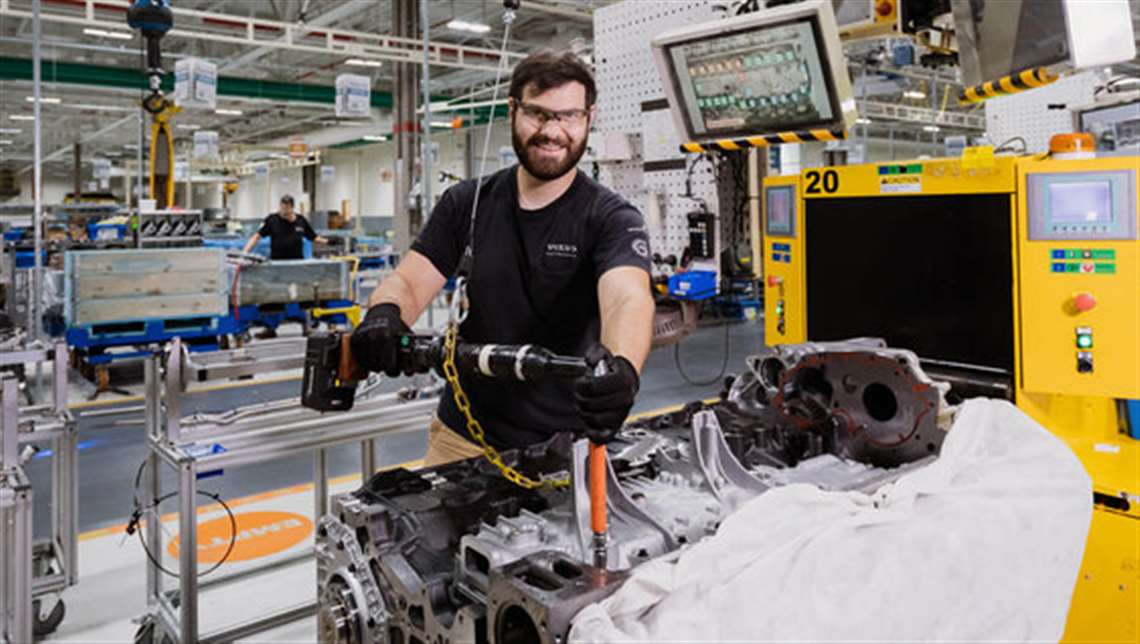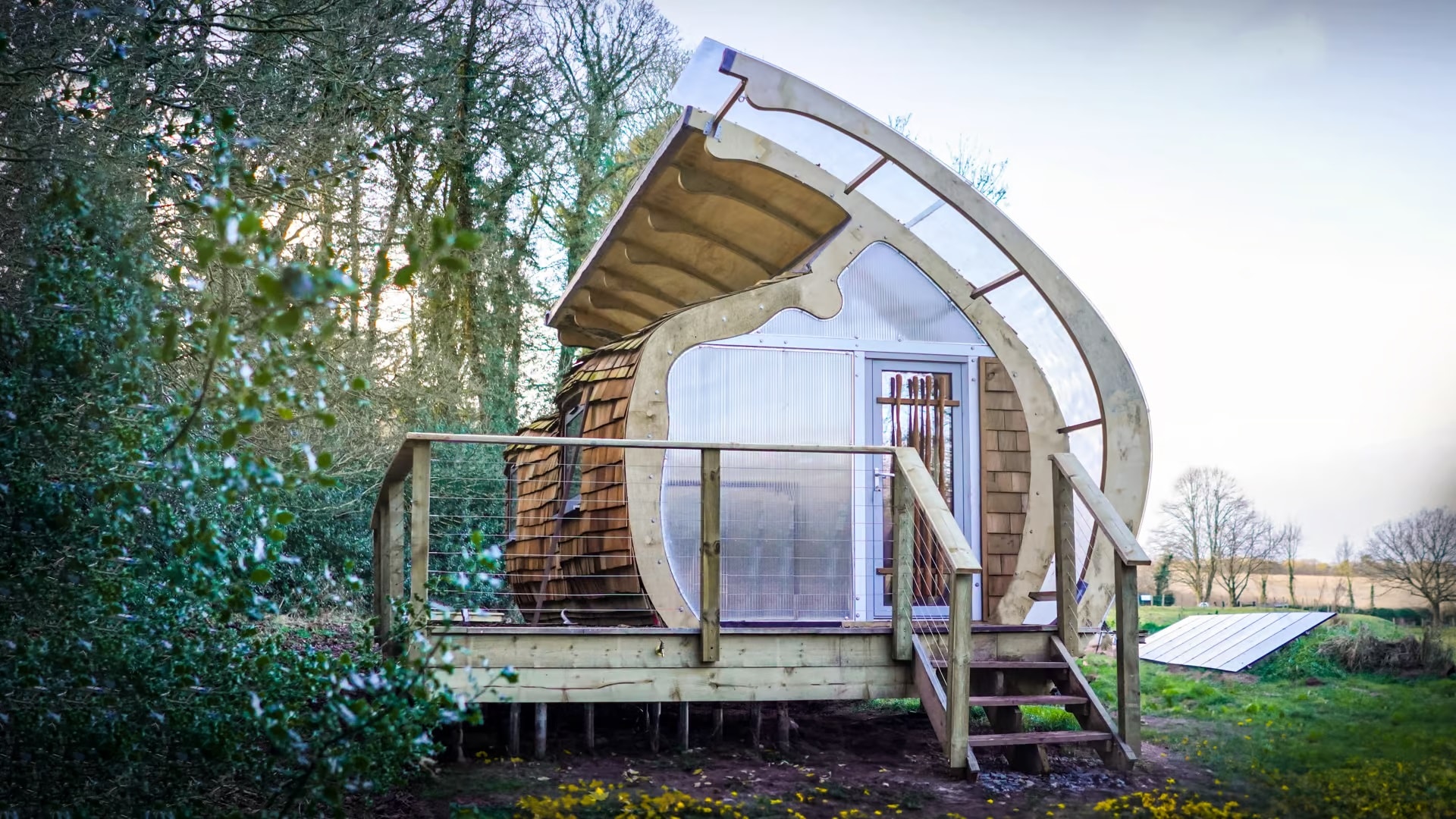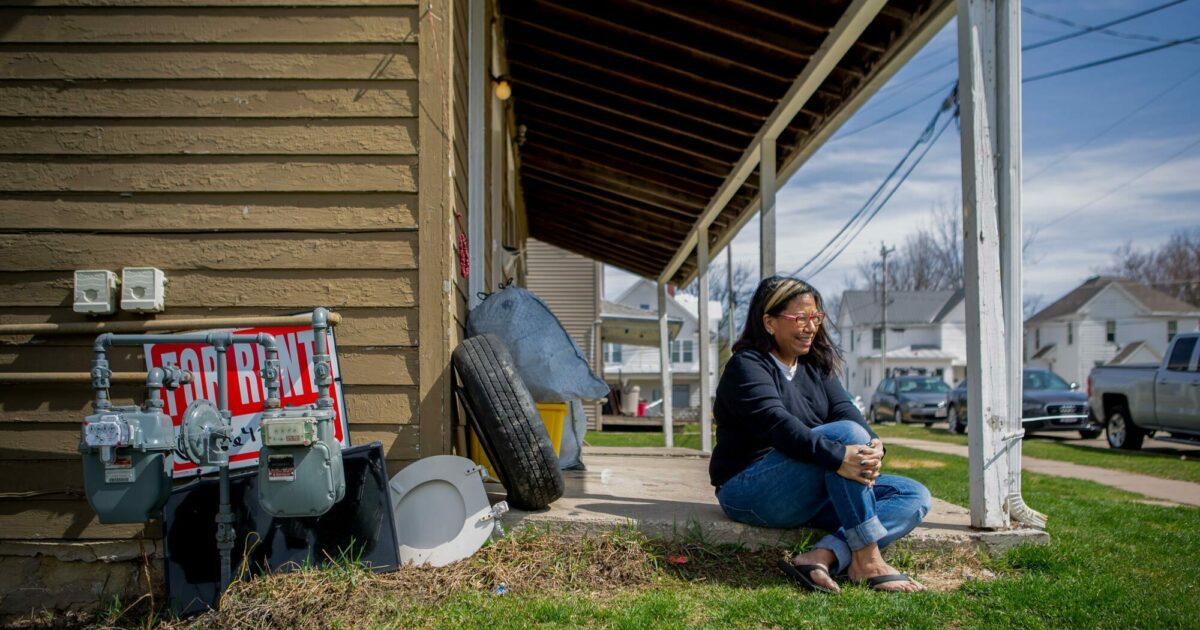by Gary Fleisher
Ever thought about the parallels between making modular houses and, say, assembling cars or cooking up hot dogs? It’s an odd mix, but stick with me here – this comparison is more insightful than it first appears!
The common suggestion for spicing up modular construction is to borrow the automation and robotics magic from car factories. Both processes involve assembling pieces to create a final product, so it sounds logical, right? But here’s the catch: modular housing production is a different beast altogether.

Photos – Autovol (top), Volvo (above)
In a modular factory, you’ll find teams working with a variety of materials, all stored on-site, coming together like a giant jigsaw puzzle. Car factories, on the other hand, operate differently. They rely on components (think engines, dashboards, transmissions) manufactured elsewhere and brought in “just in time” for assembly. I once visited a Volvo factory in my town, where they build engines for trucks and then ship them off to be added to truck frames made in completely different locations. Absolutely amazing.
Now, let’s switch gears to hot dogs – yes, hot dogs! This might seem like a leap, but the process of making modular homes has more in common with hot dog production than car manufacturing. Near me in Lancaster, PA, there’s this massive hot dog factory. Picture this: three stories of meat-grinding, spice-adding, and hot dog extruding action. They start with raw materials (your beef, chicken, pork – the works) and end up with tasty hot dogs, all made under one roof.
This process mirrors modular housing more closely. Like hot dogs, all the materials needed for a modular home are right there in the factory. The key difference? Modular housing hasn’t managed to achieve the same cost-effectiveness as mass-produced hot dogs. Developers and builders initially hoped modular housing would be a more affordable option, but nowadays, it’s pretty much on par with traditional site-built homes.
Now, if we talk about customization, both hot dogs and modular homes have their regional twists. Hot dogs get their unique flavors from different toppings and recipes – think of the classic Chicago dog with its mustard, relish, and poppy seed bun, or the Southern style with coleslaw and Vidalia onions. Modular homes, in contrast, must adapt to varying regional building codes, which means no one-size-fits-all solution. Unlike hot dogs, you can’t just ship the same modular home design to any location without considering local regulations and preferences.
So, next time you bite into a hot dog or drive by a modular home, think about the fascinating, albeit quirky, parallels in their production processes. While modular housing factories could learn a thing or two about efficiency and standardization from hot dog manufacturers, they’re certainly more complex than assembling cars. Each modular home, like each regional hot dog, has its own unique flavor and style, shaped by the demands and regulations of its destination.
.



